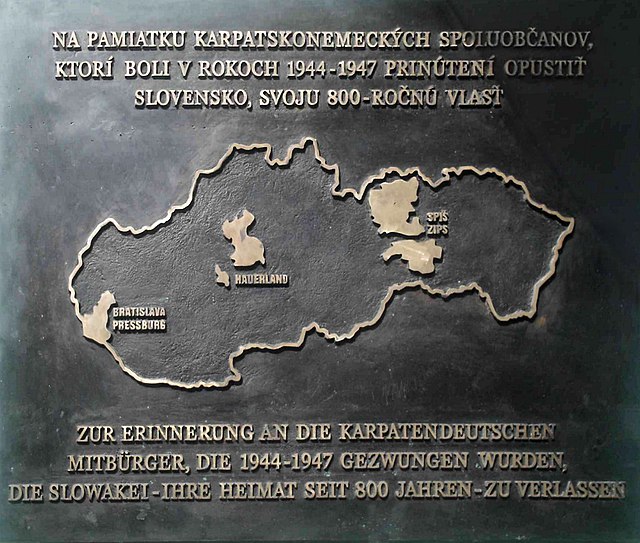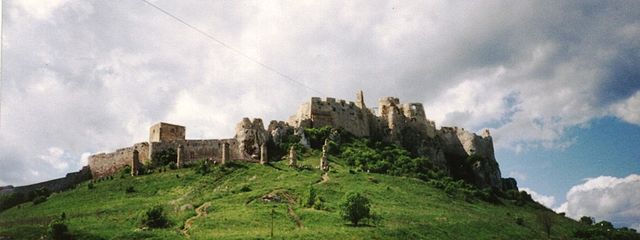Carpathian Germans are a group of ethnic Germans in Central and Eastern Europe. The term was coined by the historian Raimund Friederich Kaindl (1866–1930), originally generally referring to the German-speaking population of the area around the Carpathian Mountains: the Cisleithanian (Austrian) crown lands of Galicia and Bukovina, as well as the Hungarian half of the Austro-Hungarian monarchy, and the northwestern (Maramuresch) region of Romania. Since the First World War, only the Germans of Slovakia and those of Carpathian Ruthenia in Ukraine have commonly been called Carpathian Germans.
Westungarischer Grenzbote, 1891
Memorial dedicated to several expelled ethnic German groups from Central and Eastern Europe in Linz, Austria (the third coat-of-arms in the middle being that of the Carpathian Germans).
Memorial plaque commemorating expelled Carpathian Germans, Bratislava
Plate in the Slovak Museum of German Culture in Bratislava
Szepes was an administrative county of the Kingdom of Hungary, called Scepusium before the late 19th century. Its territory today lies in northeastern Slovakia, with a very small area in southeastern Poland. For the current region, see Spiš.
Szepes County
Spiš Castle (Szepesi vár)
Medieval square in Spišská Sobota







